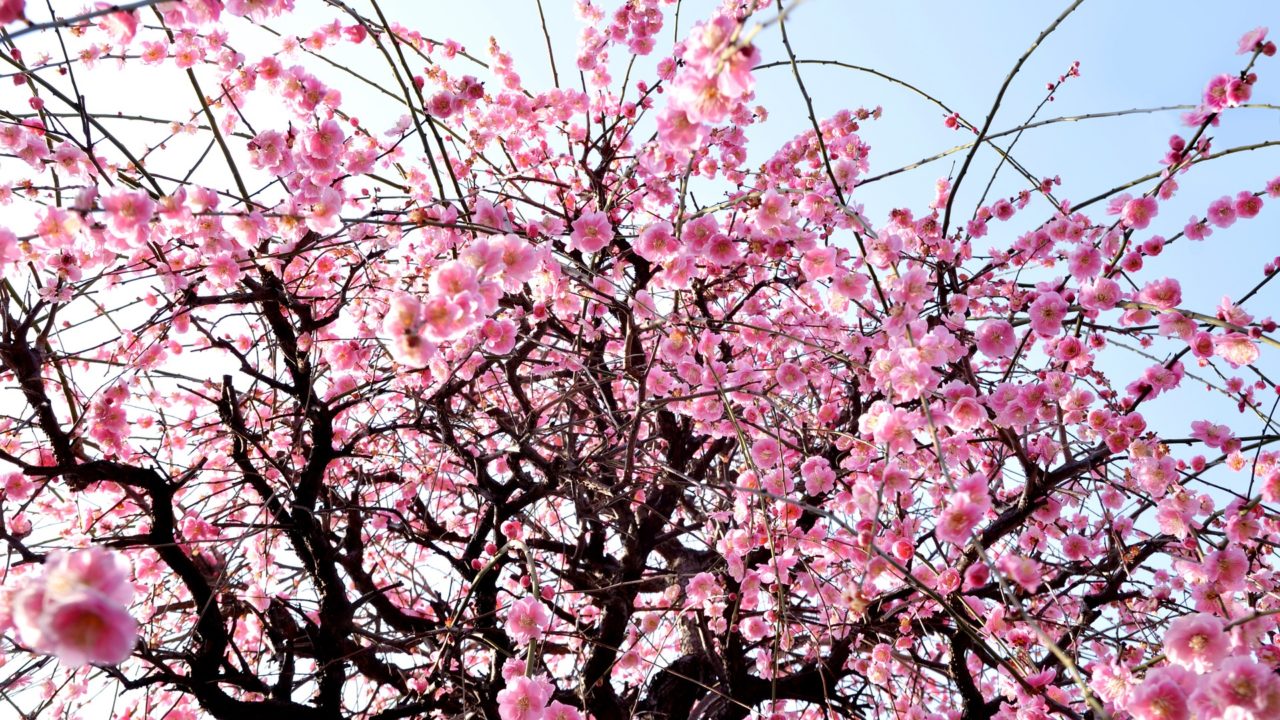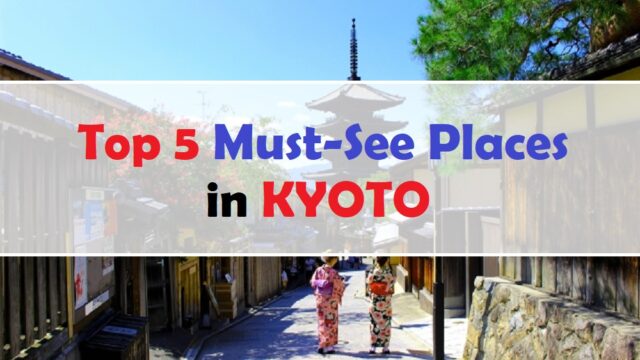You set down your favorite Mt. Fuji coffee mug. A brown stain marks the lip above the snowcapped peak. The clock above your desk declares that the weekend is here. But you can’t relax – the calendar is marked with 14 crisp red “x”’s. Your vacation is coming soon, and you still have no plan.
Travel planning is an Olympian task. Why travel to Japan? What can you do with just two weeks in such a new world?
Maybe you are a Japanophile and you have the wildest wants for an itinerary, but only a few days to travel. Perhaps you have a vague idea of the country and culture, but don’t know where to begin. You may only know you have a ticket to Tokyo and a vacation far away from home.
Travel Japan Anytime, Anywhere
Even if it feels like an Olympian task, getting to Japan is worth your while – whether for days, weeks, months, or more. Japan itself is overcoming the hurdle of their own Olympian preparations for the 2020 Olympics, so know that you are in good company.
Whenever and for however long your vacation falls, you can have an enriching taste of Japanese mono-no-aware. In other words, you can experience your fulfilling passage through a single instant among Japan’s medley of landscapes, seasons, soirees, and its spirit along your sojourn.
You won’t just stay in Japan. Japan will stay with you.
Ephemeral Esteem – Why You Can Travel Japan at any Time
There’s a unity to the unique culture of Japan, happening both cyclically and simultaneously. You can find it from the 10 skylines of Tokyo to the innumerable temples of Kansai, and in seasonal meals ranging from mountain soba to island citrus. It’s in the slew of August festivals and wintertime illuminations, to as much as inside the host of your Nagano winter ryokan stay or Shonan beachside hostel.
There are a thousand distinctions from place to place and from time to time, but you can feel something unshakably Japanese about it all in just a few days in a single place.
Landscapes – Travel between the City and Seas of Japan
Your first moment in Japan will likely involve a plane coasting down the landing strip. Unless you ship in with the Fukuoka ferry, that means you will have a small journey to the heart of whichever city you arrive in.
However jetlagged and unwashed you might be, this is no commute. Relax with your luggage on the monorail from Haneda, or on the rail bridging Osaka bay from Kansai International Airport – because this first train or bus trip is an exhibition on the constant reinvention of the landscapes of Japan.
Japan has iconic landscapes – you might know the Hokusai print depicting Fuji beyond wild ocean waves. However, any number of locations both old and new illuminate a vision beneath the Rising Sun. That’s why even the idle moments of a tired train ride make for travel in Japan.
Moments: Travel between Japan’s Present and Past
The modern moments. From Haneda airport, the monorail from Tokyo passes over the streets of Tokyo. Tokyo Tower stands in its park, as an angled array of buildings clamber over canals and out to the nearby Tokyo bay. The 634-meter-tall Skytree out to the east rises like a pagoda, while countless skylines greet you from the west.
The city’s face has so many expressions in so many skylines at any moment, and yet its all designed in a common lineage upon the shifting island archipelago.
A traditional image of Japan is just as easy to find as the city. Simply as the ticket to Tokyo, the train ride out of Narita airport goes through a Hokusai landscape.
The abundance of old master Hokusai’s style of woodblock print means a number of places still echo images of the old Japan. Narita and Chiba prefecture are filled with rice fields, with bamboo groves on the knolls between. Waters move along wide rivers out to the ocean, in the same way as hundreds of years ago.
An occasional temple peaks through, built with the same time-tested reverence that built modern Tokyo.
You can find the temples of Kyoto, Nara, and Nikko as you find yourself further afield, but you are immersed in a distinctively Japanese landscape as soon as you enter Japan. Both the new and the old Japan pass by outside your train window. Every mono-no-aware moment of passing history is framed in the image of these landscapes, in the buildings and the earth below.
Seasons Are the Reason – When to Travel Japan
The years have passed since the days of the shogun and ancient Imperial capitals, but the seasons that grace them are the same.
In Japan, seasons are conceived of as more than just four standard seasons The blooms of sakura cherry blossoms can be called a springtime pastime, but just before, plum blossoms are a distinctive event on the cusp of winter and spring. Each passing moment and its fallen flower has been an occasion of appreciation for more than a thousand years.
More than seasons, Japan anticipates numerous seasonal events for innumerable intervals. Not only are there a number of calendar holidays, but there’s a color for every season.
February brings plum, March, and April the cherry blossom; June has the hydrangea, November rusts in reddened maples; and December shows ginkgo yellow. These are only a few of the celebrated leaves and flowers. Wherever you travel in Japan, there will be a park overflowing with a sudden seasonable streak of color – it doesn’t matter how many layers you’re wearing at the time.
As the trees burst with color, people come out in streams to rest for a moment in their busy lives. The seasons bring brief beauty, and to enjoy this to the fullest means food is a necessary accompaniment.
Whether arranged at the convenience store or dropped from the trees, you will find a seasonal fruit or dish on display. If you choose to hike through autumn leaves in Nagano, you could even enjoy serenely strained soba in the mountains. No matter how remote the seasonal sightseeing, there is a taste to fit your rest and relaxation. Even if it’s just a taste, for just a day – that’s mono-no-aware.
Soirees for Days at Festival Matsuri
If your R&R is more rock and roll, the seasons bring several soirees. As the Japanese find time to relax on the precious calendar holiday or during the arrival of a seasonal event, there is always a festival to join.
The Nebuta Matsuri festival in distant Aomori falls in August. Many dances in full dresses and large hats under much larger floats. Meanwhile in May, the Sanja Matsuri in Tokyo’s Asakusa neighborhood brings many tattooed bodies out under the sun. Many wear only a fundoshi (traditional male underwear). There is music, dancing – and the only stall within the commotion is for the food kiosks.
Song and dance is a sweaty ordeal no matter the season, as the matsuri spirit burns bright and swift. Show and spectacle don’t need to involve uncommon numbers of human bodies, though, and there is more passive splendor to be found.
Illumination and Celebration
Midsummer explodes over your head when ornately designed fireworks arrays burst over Tokyo’s Sumida River.
At fireworks festivals along the river, people set up a spread on the ground. Some even pay to enjoy sitting on a Yakatabune pleasure boat. Festooned with lights, the boats glow as the fireworks explode, painting the night orange. Even in Tokyo, there’s a hypnotic hush as everyone watches.
When you’re trying to warm your hands for a moment in the winter months, you don’t need to travel far to enjoy outdoor illumination. An electric event, they pulse anywhere from northern Sapporo to Southern Fukuoka.
These cold-weather engagements make winter wonderlands out of LEDs and projection mapping, altogether as fiery as fireworks. You don’t need to press into any crowds so much as you need to press your hands together for warmth. Even better: press those hands together with a special someone. Squeeze that hand, and catch the shining moment in front of you.
The Spirit of Hospitality
Exploring the regional capital city, roaming the mountain temple trails, or even standing in front of an Akihabara game cabinet, you will become tired at some point along your travel to Japan.
Rest assured – you will not, however, become weary. Wherever you are, the spirit of Japan resides. Not simply in the ever-present shrines, but among the people all around you. It’s not an elusive or otherworldly thing – this spirit is Japanese hospitality or omotenashi. When you fall to your feet after a good day, it’s the restorative wonder that you feel in the moments under the roof of a true innkeeper.
If you don’t see your host – perhaps you aren’t at a ryokan Japanese inn, but a hotel – you will feel the careful attention of their hospitality. The scents of a seasonal plant, the cleanliness of the floorboards, the arrangement of your room – all in things in their place. The warmth of the bed or “okaeri” welcome suffuses the whole place.
And this sense of attention isn’t confined to the abode, where it heals. Omotenashi is exactly why even a trip to a Japanese convenience store feels so wholesome. This appreciation underscores every passing moment, whether you’re helped by an attendant at a train station or a Mt. Fuji hiking station. It’s why travel in Japan is less about trials and more about the trail.
Sustaining Spirit: Why Travel in Japan Goes Beyond your Vacation
Now your travels in Japan have passed, perennial like many things. This Japanese mindset regarding fleeting moments – mono-no-aware. It’s all a little sad, isn’t it? Even though your vacation was filled with the season’s givings and it made your year, you’re having misgivings. Won’t these memories just fade away like the pages in your journal? Why travel in Japan for one week when you might not be back?
You wish you could stay longer and make this hospitable place your home. A small-time in a place with rushing seasons and thousands of events and storied cultural landmarks couldn’t possibly do your experience justice. You could have spent your time on a Thai beach, without immersing yourself in this impossible mono-no-aware obsession where you lose everything.
The Trail Forward – Appreciation that Transcends your Vacation
Transience marks the traditions of Japan that have built the culture. It’s not just the austere calligraphy of a Mount Koya monk. It’s in everything from the cherry blossom drinking parties and the earthquake-preventative design of Skytree towering over Tokyo.
The Japanese don’t wallow in sad awareness of the transience of experience, though. The appreciation for ephemera has dug a wellspring for a great sense of caring, which creates the Japanese character.
How did the hostel hosts make your stay in Japan so easy? Not just with Omotenashi. There is care and attentiveness behind many Japanese people’s lifestyles and personalities, hobbies, and goals. It’s not just how they treat others – it’s how they live for themselves. It’s not a memory in a notebook or a taste on the tongue – it is something you can take to heart.
The ginger care behind Omotenashi pervades the personality behind any number of persons and places in Japan. It doesn’t escape as you set out from the genkan to enjoy your next escapade.
Hospitality persists in any building – as you enter an izakaya to a roaring “Irashaimasse,” and when you stop at a convenience store for a tea. As a person, you are cared for as a guest – no matter the moment, no matter the place.
Imperfection Makes the Perfect Matcha
As you sit down at a table for two at a teahouse, you might notice your surroundings. Your meal is arranged just so on the plate. Your matcha tea is whisked into an uneven earthenware cup. It goes down easy, and although your cup seems misshapen, it’s pleasant to the touch. The ikebana flower arrangement is a nice touch, too.
No matter how lopsided anything looks, it’s all presented attentively. This care in creation amidst imperfection has a name – wabi-sabi.
Whatever the seasonal dish or flower, whatever artisan craft, there is asymmetry. With appreciation for this imperfection, one can arrange impressive art. Whatever the art and whatever sense it pleases, all the skill comes from the care connecting the passing moments graced with their unavoidable imperfections.
Zen Whenever – Not the Garden Variety
Zen Buddhism is the practical religious realization of this sort of devotion to attentiveness. Though the Zen sect originates in China, more than a thousand years have passed since it traveled to Japan.
You might imagine therapeutic rock gardens when you hear the word “Zen.” After all, the practice does involve meditation, and temples do evoke the calm of trees and earthy musks. But like other Japanese cultures of attentiveness, Zen is in the practice; the peaceful gardens just nourish the practice.
Zen lessons can actually be violent – for example, a lesson might involve a simple and apparently random lash on your wrist. A monk is supposed to find meaning in such apparently random passing moments.
A Zen monk should find enlightenment behind the suffering of the transient world, which could either be in the sadness of mono-no-aware or in a moment of pain. If you remain vigilant, the spiritual challenge offers the eternal opportunity for self-betterment.
Otaku: More than a Passing Fad
A more recent concept is the dreaded pejorative “otaku.” It means nerd or geek and describes a culture that represents social imperfection to an outsider. Yet, otaku embraces that. They show another attentive culture that persists through the rigors of passing time and mono-no-aware.
Rejecting judgment, otaku turns an attentive hand to games, anime, manga, and all sorts of creations. They perpetuate worlds of anything from fantasy to technical detail. Not only does an anime fanbase commit season to season of the show to memory, but that fanbase also ensures the continued existence of the anime industry. They give the perennial show it’s next season.
Even if you can’t appreciate why someone might enjoy being a nerd, you will be able to continue enjoying your favorite game series when you’re back from your travel in Japan. Otaku will always continue to sustain the pop culture that brought Japan to the west – and perhaps your bedroom.
Take in Onsen Soak in Japanese Culture
Nerd culture, acclaimed artistry, and hospitality. Between every broken teacup, empty guest room, and short-lived anime season, the Japanese see the mono-no-aware. But in Omotenashi, wabi-sabi, Zen, and otaku culture, there’s the persistent care that builds sustaining traditions new and old.
Why not let yourself soak up a uniquely Japanese take on worldview and lifestyle while you travel in Japan between the ryokan and the shinkansen bullet train? When you do, you will indulge more than all the sensational phenomenon. You will understand the sublime philosophy underlying thousands of years of culture.
Instead of looking into your travel journal, look into the mirror. If you see a twinkle in your eye thinking about your visit, you will realize why travel in Japan is more than a vacation. The best way to conduct yourself at this point is to do what any self-respecting Japanese does and begin bridging your vacation and larger life with study.
Sustained through Study – Do More than Travel in Japan
The Noh theater actor dances across the trim stage. They carry the story from beginning to end, wearing it like a seamless kimono. The image is striking, and the actor’s howling voice is something sublime. Every meticulous bit of this act has created something unbelievable. Bit by bit, you can do the same.
Wherever you find yourself in Japan gasping “amazing,” you have found the gem of some cultural artifact. Japan is modern, yet its sophistication comes from that unique arts-rich history forged with care between mono-no-aware and wabi-sabi. Whether in the dance of Aikido self-defense or in the dance routines of a J-pop idol group, you can experience diligent and time-tested attention to art.
Step by step, you can commit your favorite bit of Japan to memory and practice.
Many young (and old) Japanese are eager to speak English. The language is a study matter in junior high school days, but it’s also essential to travel. And the travel – vacation or working holiday – is a popular pastime for many Japanese.
Religious and pleasure pilgrimages have been common to many Japanese for more than a thousand years, and it’s no surprise that the trend continues.
The English language is important on the international travel circuit, and many commit it to their memory and practice.
Like other languages, Japanese encodes the inclinations of the culture, of nature, philosophy and society. You can choose to learn it and become a more worldly (and wordy) traveler. It can also allow you a way to find your way back to Japan, whether with travel or in the course of study.
When your travel journal is ready for the bookshelf, remember that your Japanese journey can continue. It too is perennial. Your artistic and educational pursuits can bring you a Japanese visa, and the cycle can continue with a fresh journal. As a Japanese student, you can return with a confident “Tadaima” on your lips.
Your travel has passed, yet Japan will last
Vacations always finish in an instant. The cherry blossom petals breeze over and away in early March, and they’re gone in a week or two – mono-no-aware.
You might be savoring the kaiseki ryori meal one warm night in a snowy mountain ryokan, or taking an outside onsen hot spring dip in a passing summer shower.
The warm brush of these moments brings new memories, even though they pass. Nothing makes a vacation like the immersive culture of Japan. Even the shortest sojourn will do, asserted by the ever-present appreciation of mono-no-aware.
With the right attention, your vacation can be a perennial moment in something bigger and more awesome. As your moments become memories, Japan’s sophisticated culture and attentive persuasion will leave an impression. Your Japan experience will stay in your heart and move you – hopefully towards a return trip.




